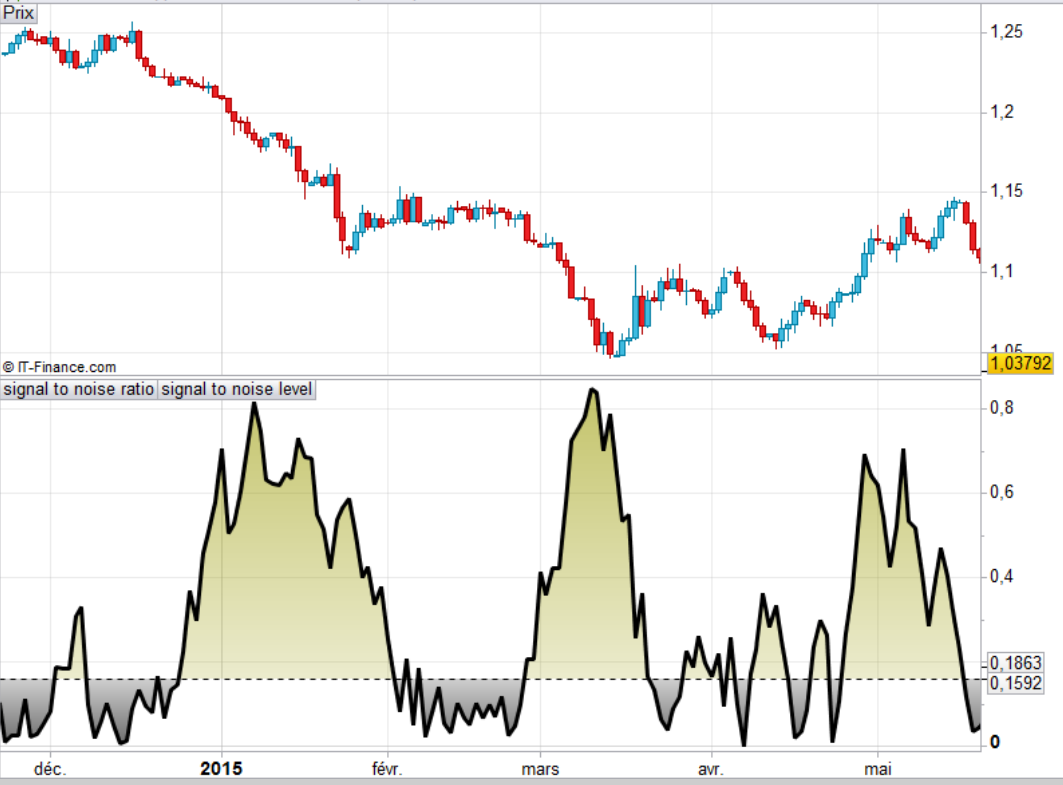Nearly every Marketing technology platform today, from email to social media to website analytics tools to more sophisticated marketing automation and customer relationship management systems, has some type of one-click-away performance management report or dashboard. While this can provide some data into how your work associated with the system is performing, this is only a view into whatever data is being captured by the tool.
To understand how Marketing is contributing to the overall business outcomes such as category ownership or growth rate versus the competition, you must gather and integrate multiple sources of data. The best dashboards focus on the most salient, information that facilitates strategic decisions and demonstrates Marketing’s contribution to the business.
The trick in building and leveraging this type of dashboard for decision-making, risk management, and course adjustment is to be able to separate the signals from the noise. When the signal-to-noise ratio is poor, your signal (in this case your salient information) gets lost in the noise (all the background data).
Why is it Important to Focus on Reducing Signal-to-Noise?

We can apply the signal-to-noise ratio idea to Marketing dashboards.
From spending a great deal of my career among engineers, I learned the importance of being able to separate relevant from irrelevant data. The concept of signal-to-noise comes from this domain (read more about about SNR). It’s a ratio (SNR) that measures the strength of a signal to the noise in the background.
We can apply the signal-to-noise ratio idea to Marketing dashboards. When your dashboard is overloaded with data, the signal can become diluted by the random noise generated by superfluous or irrelevant data. Learning how to distinguish which is important to marketers committed to using measures to make or help the organization make critical, relevant and actionable decisions.
Before we explore how to construct your Marketing dashboard, let’s explore how to reduce the SNR.
Why Quality Data Results in Terrific Dashboards

It’s critical to be able to separate the signal from the noise in your data.
Too much data is one of the primary culprits of noise. This is why it is important to remember that any dashboard, whether for Marketing or another function, needs to answer the proverbial question: So what? If it does not facilitate an action or a decision, what then is its purpose? Think about the dashboard of your car – there is a lot of data, but it all serves a specific purpose. The speedometer lets you know what your speed is so you can decide whether to stay within the speed limit. Your fuel gauge lets you know how much fuel you have so you can decide if you need to refuel now, or later. Your average-miles-per-gallon data gives you information so you can decide whether you’re receiving enough value for your money.
You will not necessarily produce a higher-quality dashboard by simply reducing the amount of data (lowering the noise level). You need to make sure you have the right data.
The best Marketing dashboard will, at a minimum, include data that helps the leadership team know:
- Which business outcomes Marketing impacts, and to what degree.
- Whether Marketing meets its performance targets.
- What is and isn’t working, and what tactical course adjustments, if any, need to be made.
- What strategic decisions related to customers, products, and competitors need to be made.
- Where the risk is, and how big it is.
To improve your signal-to-noise ratio, you must understand what decisions and actions are needed and then select ONLY the data for your dashboard that are relevant to these.
How to Improve the Data on Your Dashboard
Whether it’s website traffic, social media engagements, email opens, and click-through rates, etc., there’s a real-time dashboard for any platform you are using to support and automate this activity. It’s easy to be sucked in by this data and invest tremendous time monitoring website traffic and social media activity as it occurs. These real-time dashboards can be harmful, increasing the noise level and causing knee-jerk reactions.
Tracking and reporting your data over longer periods can help you identify the most salient data and help you clear out the noise. It can also help you identify acceptable parameters and define alerts, like how your fuel gauge alerts you that it’s time to refill the tank once the tank senses you’re running low on fuel.

Focus only on relevant data to ensure you produce an actionable Marketing dashboard.
But first, you will need to smooth out your data. While there are a variety of sophisticated statistical techniques you can use to smooth out data, a simple moving average that weights past as well as current numbers offer a relatively easy way to assess trends. Trending your data enables you to contextualize and begin to understand the underlying drivers you can impact.
For example, growth in terms of customer numbers and purchases can be examined in the context of a defined window, like the 12-month trailing moving average. Your growth trend provides a more accurate picture when you are in a market that experiences frequent peaks and valleys. Reducing the noise by averaging data over time helps when you have a high frequency of data, such as win/loss, net new opportunities, and other pipeline measures and metrics that can bounce around with huge swings in both directions.
Another way to reduce noise is to combine multiple indicators, even when they measure somewhat different concepts. For instance, look at the measures of spend and costs per, such as cost/new customer, the cost to serve, and so on. There are conceptual differences among these, so even if they were measured perfectly, they would still track differently. However, by combining these measures, you can build a better picture of the underlying trend related to value for money. Combining measures of the same concept to improve an estimate is also helpful.
Business & Finance Articles on Business 2 Community
(65)